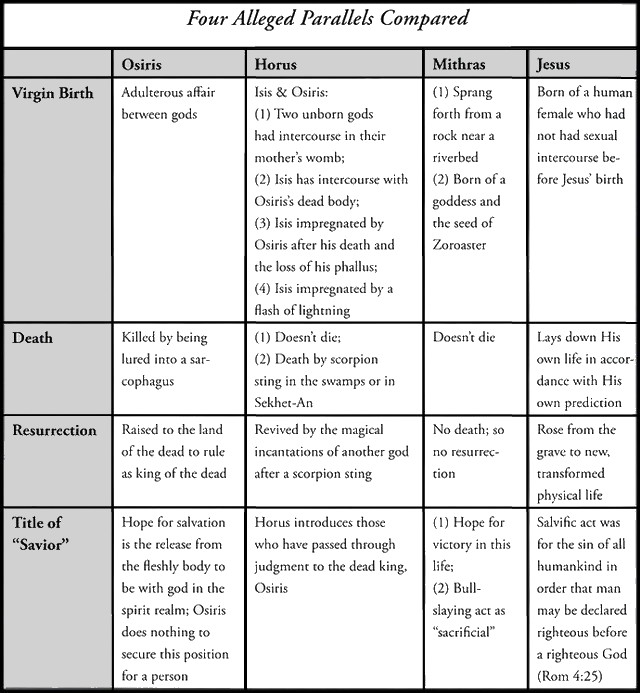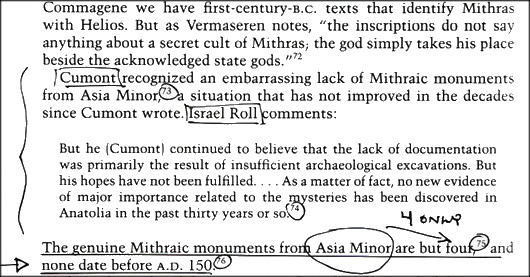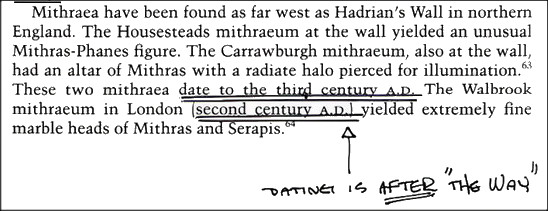(Originally posted March 31st, 2015) Christian historian and scholar Gary Habermas debates atheist Tim Callahan on the resurrection of Jesus. Callahan claims the resurrection of Jesus was influenced by pagan and Greek mythology, like Osiris, Dionysus, Adonis, Attis, etc. Of course, Callahan’s views are typical among so many young gullible atheists influenced by Richard Carrier and Robert Price. Habermas rips his claims to shreds in this debate.
Mithras


Is Jesus a Copycat Savior?
(Originally posted December of 2015, Refreshed June of 2022)
In this inaugural Cold-Case Christianity video broadcast / podcast, J. Warner re-examines an atheist objection related to the historicity of Jesus. Is Jesus merely a copycat of prior mythologies like Mithras, Osiris or Horus? How can we, as Christians, respond to such claims? Jim provides a five point response to this common atheist claim. (For more information, please visit www.ColdCaseChristianity.com)
Here are three segments of a pretty thorough refutation of the “copy-cat messiah” myth many in the gen Y and X generation have been influenced by.
Full Video Response HERE
I wish to point something out.
Very rarely do you find someone who is an honest enough skeptic that after watching the above 3 short videos asks questions like: “Okay, since my suggestion was obviously false, what would be the driving presuppositions/biases behind such a production?” “What are my driving biases/presuppositions that caused me to grab onto such false positions?” You see, few people take the time and do the hard work to compare and contrast ideas and facts. A good example of this is taken from years of discussing various topics with persons of opposing views, I often ask if they have taken the time to “compare and contrast.” Here is my example:
I own and have watched (some of the below are shown in high-school classes):
• Bowling for Columbine
• Roger and Me
• Fahrenheit 9/11
• Wal-Mart: The High Cost of Low Price
• Sicko
• An Inconvenient Truth
• Loose Change
• Zeitgeist
• Religulouse
• The God Who Wasn’t There
• Super-Size Me
But rarely [really never] do I meet someone of the opposite persuasion from me that have watched any of the following (I own and have watched):
• Celsius41.11: The Temperature at Which the Brain Dies
• FahrenHYPE 9/11
• Michael & Me
• Michael Moore Hates America
• Bullshit! Fifth Season… Read More (where they tear apart the Wal-Mart documentary)
• Indoctrinate U
• Mine Your Own Business
• Screw Loose Change
• 3-part response to Zeitgeist
• Fat-Head
• Privileged Planet
• Unlocking the Mystery of Life
Continuing. Another point often overlooked is the impact the person who suggests the believer watch Zeitgeist thinks it will have.
Now that Zeitgeist has been shown to be very unsound and the history distorted, does the skeptic apply the same intended impact back upon him or herself? In other words, what is good for the goose is also good for the gander. Remember, the skeptic expects the Christian to watch this and come face-to-face with truth that undermines his or her’s faith, showing that they have a faith founded on something other than what they previously thought, an untruth. However, this intended outcome backfires and crumbles. The skeptic then has a duty [yes a duty] to apply intended impact onto one’s own biases and presuppositions and start to impose their own skepticism inward.
Christian historian and scholar Gary Habermas debates atheist Tim Callahan on the resurrection of Jesus. Callahan claims the resurrection of Jesus was influenced by pagan and Greek mythology, like Osiris, Dionysus, Adonis, Attis, etc. Of course, Callahan’s views are typical among so many young gullible atheists influenced by Richard Carrier and Robert Price. Habermas rips his claims to shreds in this debate.
A small excerpt from Mary Jo Sharp’s chapter, “Does the Story of Jesus Mimic Pagan Stories,” via, Paul Copan & William Lane Craig, eds., Come Let Us Reason: New Essays in Christian Apologetics (pp. 154-160, 164). Mary Jo has a website, CONFIDENT CHRISTIANITY.
OSIRIS
1. Osiris
While some critics of Christ’s story utilize the story of Osiris to demonstrate that the earliest followers of Christ copied it, these critics rarely acknowledge how we know the story of Osiris at all. The only full account of Osiris’s story is from the second-century Al) Greek writer, Plutarch: “Concerning Isis and Osiris.”[4] The other information is found piecemeal in Egyptian and Greek sources, but a basic outline can be found in the Pyramid Texts (c. 2686-c. 2160 BC). This seems problematic when claiming that a story recorded in the second century influenced the New Testament accounts, which were written in the first century. Two other important aspects to mention are the evolving nature of the Osirian myth and the sexual nature of the worship of Osiris as noted by Plutarch. Notice how just a couple of details from the full story profoundly strain the comparison of Osiris with the life of Christ.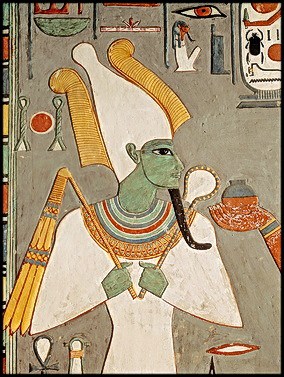
Who was Osiris? He was one of five offspring born of an adulterous affair between two gods—Nut, the sky-goddess, and Geb earth-god.[5] Because of Nut’s transgression, the Sun curses her and will not allow her to give birth on any day in any month. However, the god Thoth[6] also loves Nut. He secures five more days from the Moon to add to the Egyptian calendar specifically for Nut to give birth. While inside his mother’s womb, Osiris falls in love with his sister, Isis. The two have intercourse inside the womb of Nut, and the resultant child is Horus.[7] Nut gives birth to all five offspring: Osiris, Horus, Set, Isis, and Nephthys.
Sometime after his birth, Osiris mistakes Nephthys, the wife of hisbrother Set, for his own wife and has intercourse with her. Enraged, Set plots to murder Osiris at a celebration for the gods. During the festivities, Set procures a beautiful, sweet-smelling sarcophagus, promising it as a gift to the attendee whom it might fit. Of course, this is Osiris. Once Osiris lies down in the sarcophagus, Set solders it shut and then heaves it into the Nile. There are at least two versions of Osiris’s fate: (a) he suffocates in the sarcophagus as it floats down the Nile, and (b) he drowns in the sarcophagus after it is thrown into the Nile.
Grief-stricken Isis searches for and eventually recovers Osiris’s corpse. While traveling in a barge down the Nile, Isis conceives a child by copulating with the dead body.[8] Upon returning to Egypt, Isis attempts to conceal the corpse from Set but fails. Still furious, Set dismembers his brother’s carcass into 14 pieces, which he then scatters throughout Egypt. A temple was supposedly erected at each location where a piece of Osiris was found.
Isis retrieves all but one of the pieces, his phallus. The body is mummified with a model made of the missing phallus. In Plutarch’s account of this part of the story, he noted that the Egyptians “presently hold a festival” in honor of this sexual organ.[9] Following magical incantations, Osiris is raised in the netherworld to reign as king of the dead in the land of the dead. In The Riddle of Resurrection: Dying and Rising Gods in the Ancient Near East, T. N. D. Mettinger states: “He both died and rose. But, and this is most important, he rose to continued life in the Netherworld, and the general connotations are that he was a god of the dead.”[10] Mettinger quotes Egyptologist Henri Frankfort:
Osiris, in fact, was not a dying god at all but a dead god. He never returned among the living; he was not liberated from the world of the dead,… on the contrary, Osiris altogether belonged to the world of the dead; it was from there that he bestowed his blessings upon Egypt. He was always depicted as a mummy, a dead king.[11]
This presents a very different picture from the resurrection of Jesus, which was reported as a return to physical life.
HORUS
2. Horus
Horus’s story is a bit difficult to decipher for two main reasons. Generally, his story lacks the amount of information for other gods, such as Osiris. Also, there are two stories concerning Horus that develop and then merge throughout Egyptian history: Horus the Sun-god, and Horus the child of Isis and Osiris. The major texts for Horus’s story are the Pyramid Texts, Coffin Texts, the Book of the Dead, Plutarch, and Apuleius-all of which reflect the story of Horus as the child of Isis and Osiris.[12] The story is routinely found wherever the story of Osiris is found.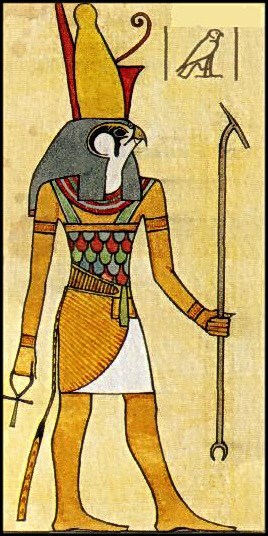
Who was Horus? He was the child of Isis and Osiris. His birth has several explanations as mentioned in Isis and Osiris’s story: (1) the result of the intercourse between Isis and Osiris in Nut’s womb; (2) conceived by Isis’s sexual intercourse with Osiris’s dead body; (3) Isis is impregnated by Osiris after his death and after the loss of his phallus; or (4) Isis is impregnated by a flash of lightning.[13] To protect Horus from his uncle’s rage against his father, Isis hides the child in the Delta swamps. While he is hiding, a scorpion stings him, and Isis returns to find his body lifeless. (In Margaret Murray’s account in The Splendor That Was Egypt, there is no death story here, but simply a poisoned child.) Isis prays to the god Ra to restore her son. Ra sends Thoth, another Egyptian god, to impart magical spells to Isis for the removal of the poison. Thus, Isis restores Horus to life. The lesson for worshippers of Isis is that prayers made to her will protect their children from harm and illness. Notice the outworking of this story is certainly not a hope for resurrection to new life, in which death is vanquished forever as is held by followers of Jesus.[14] Despite this strain on the argument, some still insist that Horus’s scorpion poisoning is akin to the death and resurrection of Jesus.
In a variation of Horus’s story, he matures into adulthood at an accelerated rate and sets out to avenge his father’s death. In an epic battle with his uncle Set, Horus loses his left eye, and his uncle suffers the loss of one part of his genitalia. The sacrifice of Horus’s eye, when given as an offering before the mummified Osiris, is what brings Osiris new life in the underworld.[15] Horus’s duties included arranging the burial rites of his dead father, avenging Osiris’s death, offering sacrifice as the Royal Sacrificer, and introducing recently deceased persons to Osiris in the netherworld as depicted in the Hunefer Papyrus (1317-1301 BC). One aspect of Horus’s duties as avenger was to strike down the foes of Osiris. This was ritualized through human sacrifice in the first dynasty, and then, eventually, animal sacrifice by the eighteenth dynasty. In the Book of the Dead we read of Osiris, “Behold this god, great of slaughter, great of fear! He washes in your blood, he bathes in your gore!”[16] So Horus, in the role of Royal Sacrificer, bought his own life from this Osiris by sacrificing the life of other. There is no similarity here to the sacrificial death of Jesus.
MITHRA
3. Mithras
There are no substantive accounts of Mithras’s story, but rather a pieced-together story from inscriptions, depictions, and surviving Mithraea (man-made caverns of worship). According to Rodney Stark, professor of social sciences at Baylor University, an immense amount of “nonsense” has been inspired by modern writers seeking to “decode the Mithraic mysteries.”[17] The reality is we know very little about the mystery of Mithras or its doctrines because of the secrecy of the cult initiates. Another problematic aspect is the attempt to trace the Roman military god, Mithras, back to the earlier Persian god, Mithra, and to the even earlier Indo-Iranian god, Mitra. While it is plausible that the latest form of Mithraic worship was based on antecedent Indo-Iranian traditions, the mystery religion that is compared to the story of Christ was a “genuinely new creation?”[18] Currently, some popular authors utilize the Roman god’s story from around the second century along with the Iranian god’s dates of appearance (c. 1500-1400 BC).
This is the sort of poor scholarship employed in popular renditions of Mithras, such as in Zeitgeist: The Movie. For the purpose of summary, we will utilize the basic aspects of the myth as found in Franz Cumont’s writing and note variations, keeping in mind that many Mithraic scholars question Cumont, as well as one another, as to interpretations and aspects of the story.[19] Thus, we will begin with Cumont’s outline.
Who was Mithra? He was born of a “generative rock,” next to a river bank, under the shade of a sacred tree. He emerged holding a dagger in one hand and a torch in the other to illumine the depths from which he came. In one variation of his story, after Mithra’s emergence from the rock, he clothed himself in fig leaves and then began to test his strength by subjugating the previously existent creatures of the world. Mithra’s first activity was to battle the Sun, whom he eventually befriended. His next activity was to battle the first living creature, a bull created by Ormazd (Ahura Mazda). Mithra slew the bull, and from its body, spine, and blood came all useful herbs and plants. The seed of the bull, gathered by the Moon, produced all the useful animals. It is through this first sacrifice of the first bull that beneficent life came into being, including human life. According to some traditions, this slaying took place in a cave, which allegedly explains the cave-like Mithraea.[20]
Mit(h)ra’s name meant “contract” or “compact.”[21] He was known in the Avesta—the Zoroastrian sacred texts—as the god with a hundred ears and a hundred eyes who sees, hears, and knows all. Mit(h)ra upheld agreements and defended truth. He was often invoked in solemn oaths that pledged the fulfillment of contracts and which promised his wrath should a person commit perjury. In the Zoroastrian tradition, Mithra was one of many minor deities (yazatas) created by Ahura Mazda, the supreme deity. He was the being who existed between the good Ahura Mazda and the evil Angra Mainyu—the being who exists between light and darkness and mediates between the two. Though he was considered a lesser deity to Ahura Mazda, he was still the “most potent and most glorious of the yazata.”[22]
The Roman version of this deity (Mithras) identified him with the light and sun. However, the god was not depicted as one with the sun, rather as sitting next to the sun in the communal meal. Again, Mithras was seen as a friend of the sun. This is important to note, as a later Roman inscription (c. AD 376) touted him as “Father of Fathers” and “the Invincible Sun God Mithras.”[23] Mithras was proclaimed as invincible because he never died and because he was completely victorious in all his battles. These aspects made him an attractive god for soldiers of the Roman army, who were his chief followers. Pockets of archaeological evidence from the outermost parts of the Roman Empire reinforce this assumption. Obviously, some problems arise in comparing Mithras to Christ, even at this level of simply comparing stories. Mithras lacks a death and therefore also lacks a resurrection.
Now that we have a more comprehensive view of the stories, it is quite easy to discern the vast difference between the story of Jesus and even the basic story lines of the commonly compared pagan mystery gods. One must only use the very limited, general aspects of the stories to make the accusation of borrowing, while ignoring the numerous aspects having nothing in common with Jesus’ story, such as missing body parts, sibling sexual intercourse inside the womb of a goddess-mother, and being born from a rock. This is why it is important to get the whole story. The supposed similarities are quite flimsy in the fuller context.
Just three excerpts from Edwin Yamauchi’s book, Persia and the Bible, These three pics are a bit unrelated… but the topic is on Mithras and their dating of the reliefs known to us. If you take the time to read Dr. Yamauchi’s chapter linked, you can see the connection to the above portion by Mary Jo. (The entire chapter on MITHRAISM can be read HERE.)
FOOTNOTES FROM BOXES “A” “B” “C”
[4] Plutarch, “Concerning Isis and Osiris,” in Hellenistic Religions: The Age of Syncretism, ed. Frederick C. Grant (Indianapolis: Liberal Arts Press, 1953), 80-95.
[5] In some depictions, Nut and Geb are married. Plutarch’s account insinuates that they have committed adultery because of the anger of the Sun at Nut’s transgression.
[6] Plutarch refers to Thoth as Hermes in “Concerning Isis and Osiris.”
[7] Plutarch’s “Concerning Isis and Osiris” appears to be the only account with this story of Horus’s birth.
[8] This aspect of the story, which was a variation of Horus’s conception story, is depicted in a drawing from the Osiris temple in Dendara.
[9] Plutarch, “Concerning Isis and Osiris,” 87.
[10] N. D. Mettinger, The Riddle of Resurrection: Dying and Rising Gods in the Ancient Near East (Stockholm: Almqvist & Wiksell, 2001), 175.
[11] Henri Frankfort, Kingship and the Gods: A Study of Ancient Near Eastern Religion as the Integration of Society and Nature (Chicago: Oriental Institute of the University of Chicago, 190, 289; cf. 185; cited in Mettinger, Riddle of Resurrection, 172.
[12] For the purposes of this chapter, I use the following sources and translations: E. A. Wallis Budge’s translation of the Book of the Dead; Plutarch’s “Concerning Isis and Osiris”; Joseph Campbell’s piecing together of the story in The Mythic Image; as well as other noted interpretations of the story.
[13] The latter two versions of Horus’s birth can be found in Rodney Stark, Discovering God: The Origins of the Great Religions and the Evolution of Belief (New York: Harper Collins, 2007), 204. However, Stark does not reference the source for these birth stories.
[14] The development of Isis’s worship as a protector of children is a result of this instance; Margaret A. Murray, The Splendor That Was Egypt, rev. ed. (Mineola: Dover, 2004), 106.
[15] Joseph Campbell, The Mythic Image (Princeton, NJ: Princeton University Press, 1974), 29, 450.
[16] Murray, The Splendor That Was Egypt, 103.
[17] Stark, Discovering God, 141.
[18] Roger Beck, “The Mysteries of Mithras: A New Account of Their Genesis,” Journal of Roman Studies 88 (1998): 123.
[19] Roger Beck, M. J. Vermaseren, David Ulansey, N. M. Swerdlow, Bruce Lincoln, John R Hinnells, and Reinhold Merkelbach, for example.
[20] More corecontemporary Mithraic scholars have pointed to the lack of a bull-slaying story in the Iranian version of Mithra’s story: “there is no evidence the Iranian god ever had anything to do with a bull-slaying.” David Ulansey, The Origins of the Mithraic Mysteries (New York: Oxford University Press, 1989), 8; see Bruce Lincoln, “Mitra, Mithra, Mithras: Problems of a Multiform Deity,” review of John R. Hinnells, Mithraic Studies: Proceedings of the First International Congress of Mithraic Studies, in History of Religions 17 (1977): 202-3. For an interpretation of the slaying of the bull as a cosmic event, see Luther H. Martin, “Roman Mithrraism and Christianity,” Numen 36 (1989): 8.
[21] “For the god is clearly and sufficiently defined by his name. `Mitra means ‘con-tract’, as Meillet established long ago and D. [Professor G. Dumezi] knows but keeps forgetting.” Ilya Gershevitch, review of Mitra and Aryaman and The Western Response to Zoroaster, in the Bulletin of the School of Oriental and African Studies 22 (1959): 154. See Paul Thieme, “Remarks on the Avestan Hymn to Mithra,”Bulletin of the School of Oriental and African Studies 23 (1960): 273.
[22] Franz Cumont, The Mysteries of Mithra: The Origins of Mithraism (1903). Accessed on May 3,2008, http://www.sacred-texts.com/cla/mom/index.htm.
[23] Corpus Inscriptionum Latinarum VI. 510; H. Dessau, Inscriptions Latinae Selectae II. 1 (1902), No. 4152, as quoted in Grant, Hellenistic Religions, 147. This inscription was found at Rome, dated August 13, AD 376. Notice the late date of this title for Mithras—well after Christianity was firmly established in Rome.
Another good source is: “Jesus Vs Mithra – Debunking The Alleged Parallels“
Dr. William Lane Craig
On Thursday, April 10th, 2014 Dr William Lane Craig spoke on the “Objective Evidence for the Resurrection of Jesus” at Yale University. Dr. Craig is one of the leading theologians and defenders of Jesus’ resurrection, demonstrating the veracity of his divinity. This is the biggest claim in history! After the lecture, Dr Craig had a lengthy question and answer time with students from Yale. In this video, Dr Craig answers the question, “What about pre-Christ resurrection myths?”
Dr. William Lane Craig answers the question: Is Jesus’ life parallel to the story of Osiris and Horus?

Sargon of Akkad’s Skepticism Is Nothing Special
I was listening to Steven Crowder and “Sargon of Akkad” talk about various subjects… and then it got onto the Bible.
Typical things like presuppositions about miracles being impossible stated BEFORE saying the miraculous life of Jesus is impossible… but before getting into more of the miraculous and Mithra’ism, I want to deal with an issue of Sargon’s name and his affinity to Zeitgeist. Sargon of Akkad is said to be a story that many years later the Story of Moses in Exodus 2:1-10, which reads:
And there went a man of the house of Levi, and took to wife a daughter of Levi. And the woman conceived, and bare a son: and when she saw him that he was a goodly child, she hid him three months. And when she could not longer hide him, she took for him an ark of bulrushes, and daubed it with slime and with pitch, and put the child therein; and she laid it in the flags by the river’s brink. And his sister stood afar off, to wit what would be done to him. And the daughter of Pharaoh came down to wash herself at the river; and her maidens walked along by the river’s side; and when she saw the ark among the flags, she sent her maid to fetch it. And when she had opened it, she saw the child: and, behold, the babe wept. And she had compassion on him, and said, This is one of the Hebrews’ children. Then said his sister to Pharaoh’s daughter, Shall I go and call to thee a nurse of the Hebrew women, that she may nurse the child for thee? And Pharaoh’s daughter said to her, Go. And the maid went and called the child’s mother. And Pharaoh’s daughter said unto her, Take this child away, and nurse it for me, and I will give thee thy wages. And the woman took the child, and nursed it. And the child grew, and she brought him unto Pharaoh’s daughter, and he became her son. And she called his name Moses: and she said, Because I drew him out of the water.
This story is referenced in many atheist rejections of Scripture. Here is one post at Debunking Atheism that deal with the topic:
…it [the movie Zeitgeist — see my rebuttle to it here] goes on to make similar claims about the story of Moses,
There is the plagiarized story of Moses. Upon Moses’ birth, it is said that he was placed in a reed basket and set adrift in a river in order to avoid infanticide. He was later rescued by a daughter of royalty and raised by her as a Prince. This baby in a basket story was lifted directly from the myth of Sargon of Akkad of around 2250 b.c. Sargon was born, placed in a reed basket in order to avoid infanticide, and set adrift in a river. He was in turn rescued and raised by Akki, a royal mid-wife.
Zeitgeist makes the claim that the ancient king Sargon was placed in a basket to “avoid infanticide” and is later found by a royal mid-wife. The claim then becomes that since Sargon lived before Moses then therefore Moses must have plagiarized the story.
There is indeed a famous story of Sargon being left in a basket on the Euphrates river preserved in cuneiform tablets of Ancient Assyria. The cuneiform tablet says,
Sargon, mighty king, king of Agade, am I. My mother was a high priestess, my father I knew not; My father’s brothers live in the mountains; My city is Azupiranu, situated on the banks of the Euphrates My mother, the high priestess, conceived me, in secret she bore me; She placed me in a basket of rushes, she sealed the lid with bitumen; She cast me into the river which did not rise over me; The river bore me up and carried me to Aqqi, the water-drawer. Aqqi, the water-drawer, lifted me out as he dipped his bucket; Aqqi, the water-drawer, adopted me, brought me up; Aqqi, the water-drawer, set me up as his gardener. As a gardener, Ishtar, loved me; For 55 years I ruled as king.
The similarity to Moses is obvious to anyone who has read both the story of Moses and the legend of Sargon. But a carefull reading shows that the film, Zeitgeist, in its description of the similarities between the two stories is actually exaggerated.
The claim that Sargon’s mother placed him in the basket and set him adrift to save him from infanticide is actually unsubstantiated. Nowhere in the inscription does it say that she did it to save him from anything or anyone. It just simply says she set him adrift. And the way that the tablet says “she [his mother] cast me into the river” kind of gives the impression that this is a case of child abandonment rather than to save his life.
James Holding in his essay gives background information of the importance of Sargon’s mother being a high priestess. He points out that in order to maintain her position she had to avoid pregnancy. This therefore would account for her giving birth in secrecy and would indicate that she was just disposing of her unwanted newborn child.
The fact that the story says she set him adrift also indicates she didn’t care whether or not he survived. This is a major difference between the two stories. — Contrary to what Cecil B. DeMille’sThe Ten Commandments shows, even though Moses was placed in a basket on the Nile river, he was not set adrift. Exodus 2: 3, 4 says that he was placed at the edge of the river among the reeds and his sister “stood” at a distance to watch him. The reeds would have kept the basket from drifting away. He was meant to survive which is not seemingly the case with Sargon….
Take note as well that Exodus is written well before the first accounts of this story that is supposedly plagiarized:
- The date of the Biblical exodus-conquest is clear. 1 Kgs 6:1 and 1 Chr 6:33–37 converge on a date of 1446 BC for the exodus and the Jubilees data and Judg 11:26 independently converge on a date of 1406 BC for the beginning of the conquest. The 1406 BC date is further confirmed by archaeological data from Jericho, Ai (Kh. el-Maqatir) and Hazor. In the end, Hoffmeier’s response has served to reinforce my earlier conclusion that “there is no valid evidence, Biblical or extra-Biblical, to sustain it.” The theory is a scholarly construct popularized by William F. Albright in the mid-20th century. It is not supported by Biblical or extra-Biblical texts and has lost its presumed archaeological underpinnings, thus has no place in contemporary Biblical scholarship.
Here is another fine article about the dating of Exodus. Whereas the first known reference to Akkad’s story is found in fragments in the Library of Ashurbanipal from the 7th century BC. So much like you will see below with Mithra’ism… the legend POST-DATES the Biblical record and thus it is VERY possible that the plagiarism is the other way around.
Onto Miracles and other positions taken explicetly or implicetly by Sargon.
Miracles and Bias
Professor: “Miracles are impossible Sean, don’t you know science has disproven them, how could you believe in them [i.e., answered prayer, a man being raised from the dead, etc.].”
Student: “for clarity purposes I wish to get some definitions straight. Would it be fair to say that science is generally defined as ‘the human activity of seeking natural explanations for what we observe in the world around us’?”
Professor: “Beautifully put, that is the basic definition of science in every text-book I read through my Doctoral journey.”
Student: “Wouldn’t you also say that a good definition of a miracle would be ‘and event in nature caused by something outside of nature’?”
Professor: “Yes, that would be an acceptable definition of ‘miracle.’”
Student: “But since you do not believe that anything outside of nature exists [materialism, dialectical materialism, empiricism, existentialism, naturalism, and humanism – whatever you wish to call it], you are ‘forced’ to conclude that miracles are impossible”
Norman L. Geisler & Peter Bocchino, Unshakable Foundations: Contemporary Answers to Crucial Questions about the Christian Faith (Minneapolis, MN: Bethany House, 2001), 63-64.
This commitment to materialism is referenced in one of the best books about the Jesus Seminar:
Philosophical Naturalism and the Modern Worldview
The second modern factor that has contributed to the widespread understanding that religious belief is private, practical, and relative, and need not be related to truth and reason is the widespread acceptance of philosophical naturalism as an expression of scientism. Philosophical naturalism is the idea that reality is exhausted by the spatio-temporal world of physical entities that we can investigate in the natural sciences. The natural causal Fabric of physical reality within the boundaries of space and time is all there is, was, or ever will be. The supernatural doesn’t exist except, perhaps, as a belief in people’s minds. On this view, religious beliefs are simply ways of looking at things in our search for meaning and purpose; they are not ideas that correspond to a mind-independent reality.
Philosophical naturalism is an expression of an epistemology (i.e., a theory of knowledge and justified or warranted belief) known as scientism. Scientism is the view that the natural sciencesare the very paradigm of truth and rationality. If something does not square with currently well-established beliefs, if it is not within the domain of entities appropriate for scientific investigation, or if it is not amenable to scientific methodology then it is not true or rational. Everything outside of science is a matter of mere belief and subjective opinion, of which rational assessment is impossible. Applied to the question of the historical origins of Christianity, scientism implies that since we live in the modern scientific world where the sun is the center of the solar system, the wireless is available for our use, and the atoms power has been harnessed, we can no longer believe in a biblical worldview with its miracles, demons, and supernatural realities.
Obviously, it is impossible in the brief space of an introduction to critique adequately scientism and naturalism. Still, a few cursory remarks need to be expressed.
(1) Scientism is simply false for three reasons. (a) It is self-refining, i.e., it falsifies itself. Why? Scientism is itself a statement of philosophy about knowledge and science; it is not a statement ofscience itself. Moreover, it is a statement of philosophy that amounts to the claim that no statements outside scientific ones, including scientism itself (because it is a statement of philosophy), can be true or supported by rational considerations. (b) Science itself rests on a number of assumptions: the existence of a theory-independent external world, the orderly nature of the external world, the existence of truth and the reliability of our senses and rational faculties to gather truth about the world in a trustworthy manner, the laws of logic and the truths of mathematics, the adequacy of language (including mathematical language) to describe the external world, the uniformity of nature, and soon. Now, each one of these assumptions is philosophical in nature. The task of stating, criticizing, and defending the assumptions of science rests in the field of philosophy. Scientism fails to leave room for these philosophical tasks and, thus, shows itself to be a foe and not a friend of science. (c) There are many things we know in religion, ethics, logic, mathematics, history, art, literature, and so on that are simply not matters of science. For example, we all know that two is an even number, that Napoleon lived, that torturing babies for fun is wrong, that if A is larger than B and B is larger than C, then A is larger than C, and so on. None of these items of knowledge are scientific in nature, and scientism is falsified by their reality.
(2) Philosophical naturalism is false as well. For one thing, philosophical naturalism rules out the existence of a number of things that do, in fact, exist. And while we cannot defend their existence here, suffice it to say that, currently, a number of intellectuals have offered convincing arguments for the reality of universals and other abstract objects such as numbers, the laws of logic, values, the soul and its various mental states (including the first person point of view), other minds, libertarian or full-blown freedom of the will, and so on. None of these items can be classified as mere physical objects totally within the causal fabric of the natural spatio-temporal universe. In fact, it is not an exaggeration to say that there is not a single issue of importance to human beings that is solely a matter of scientific investigation or that can be satisfactorily treated by philosophical naturalists.
(3) Philosophical naturalism fails to explain adequately the fact that there are a number of arguments and pieces of evidence that make belief in God more reasonable than disbelief. Some of this evidence actually comes from science: the fact that the universe had a beginning based on the Big Bang theory and the second law of thermodynamics, the existence of biological information in DNA that is closely analogous to intelligent language and that cannot arise from the accidental collisions of physical entities according to laws of nature, the reality of the mental and of free will according to a number of emerging psychological theories of the self, the delicate fine-tuning of the universe, and so on.”
Like it or not, a significant and growing number of scientists, historians of science, and philosophers of science see more scientific evidence now for a personal creator and designer than was available fifty years ago. In light of this evidence, it is false and naive to claim that modern science has made belief in the supernatural unreasonable. Such a view can be called ostrich naturalism—a position that requires its advocate to keep his or her head in the sand and not to acknowledge real advances in science. The plain truth is that science itself makes no statements about all of reality anyway, nor does science itself offer any support for philosophical naturalism. What does support philosophical naturalism are the ideological claims of naturalists themselves regarding what science ought to say if we assume philosophical naturalism to begin with.
In sum, it matters much that our religious beliefs are both true and reasonable. Moreover, there simply are no sufficient reasons for not believing in the supernatural, and there are in fact a number of good reasons (including but going beyond scientific ones) for believing in the supernatural. As we have said, space considerations do not permit us to defend this last claim here. But we will list some sources in the bibliography that adequately justify this claim. If you are an honest inquirer about the truth of religion, moral and intellectual integrity unite in placing a duty on you to read these works as a sincere seeker of the truth. It is well past time to rest content with the politically correct, unjustified assertions of scientism and philosophical naturalism. University libraries are filled with books that show the weaknesses of these views, and the fellows of the Jesus Seminar show virtually no indication that they have so much as interacted with the arguments they contain, much less have they refuted their claims.
Regarding Jesus of Nazareth, all of this means the following: Prior to investigating the historical evidence about his life, deeds, sayings, and significance, there is no good reason to bring to the evidence a prior commitment to naturalism. As later chapters will show, such a commitment is Procrustean in that it often forces the evidence of history to fit an unjustified anti-supernatural bias. But when the evidence is evaluated on its own terms, and when such an evaluation is combined with the rigorous case for supernatural theism already available in the literature, then the claims of historic, orthodox Christianity can be reasonably judged to be true.
Michael J. Wilkins, ed., Jesus Under Fire: Modern Scholarship Reinvents the Historical Jesus (Grand Rapids, MI: Zondervan, 1996), 8-10.
Mithraism
Another small point made (Mithraism is stated specifically later in convo) was about mythical religions being the source of much of Christianity. This is the “Zeitgeist” Effect, and is easily disproved… which I have posted a rebuttal of here. But to correct Sargon’s use of Mitrhaic religion… it post dates Christianity. Here is a good short refutation showing that there is no historical evidence to prove Mithraism as Sargon postulates PRE-DATES Christianity:
The most popular hypothesis holds that Roman soldiers encountered this religion during military excursions to areas known today as Iran and Iraq. For many years scholars believed that the Roman mystery cult was based on the ancient Persian god, thus predating Christianity. This assumption begins with early twentieth-century Belgian archaeologist and historian Franz Cumont (cf. Cumont’s book The Mysteries of Mithra).
While Cumont’s work is regarded as pioneering in the field, many recent scholars have challenged his assumption. According to John Hinnells at the First International Congress of Mithraic Studies held in 1971, “We must now conclude that [Cumont’s] reconstruction simply will not stand. It receives no support from the Iranian material and is in fact in conflict with the ideas of that tradition as they are represented in the extant texts. Above all, it is a theoretical reconstruction which does not accord with the actual Roman iconography” (John R. Hinnells, Mithraic Studies, vol. 2, “Reflections on the bull-slaying scene”).
Manfred Claus, a professor of ancient history at the Free University of Berlin, also supports this position: “The mysteries cannot be shown to have developed from Persian religious ideas, nor does it make sense to interpret them as a forerunner of Christianity” (The Roman Cult of Mithras, p. 7).
In the link leading to my post on this stuff I have pages from a book showing the dates of the VERY popular reliefs used by skeptics to show that Christianity stole from Mithraism… the only proble? The POST-DATE Christianity:
If one reads that scholarly chapter they will come away with a changed position via historical evidences and not the slush found on skeptical websites. However, I just wanted to note Sargon’s reference to Second Kings 18:13 by having professor Archer lay out the issue referenced:
Second Kings 18:13 in the Masoretic text states: “Now in the fourteenth year of King Hezekiah, Sennacherib king of Assyria came up against all the fortified cities of Judah and seized them.” Since Sennacherib’s own record in the Taylor Prism establishes 701 B.C. as the date of that invasion, the four¬teenth year of Hezekiah would mean that he did not ascend the throne until 715 B.C. Yet 2 Kings 18:1 (the very same chapter, be it noted) states that Hezekiah became king in the third year of Hoshea king of Israel—which comes out to 729 or 728. This would have been the year in which he was crowned as subordinate king, under his father Ahaz (who did not die until 725). The Masoretic text of 2 Kings 18:13 therefore stands in clear con¬tradiction to 18:1,9, and 10, which confirm that Hezekiah’s fourth year was Hoshea’s seventh and that Hezekiah’s sixth was Hoshea’s ninth (i.e., 722 B.c.).
Gleason L. Archer, Encyclopedia of Biblical Difficulties (Grand Rapids, MI: Zondervan Publishing House, 1982), cf. 2 Kings 18:13, 211.
BEFORE I go any further… I want to point out how minor this mistake (and subsequent correction) is. It does not do anything to the integrity of the Bible, its message, or it’s historical soundness. Even someone who is seen as dealing the biggest blow to textual studies as of late, Bart Ehrman, even he acknowledges nothing he has written deterioates the main theisis and message of Christianity or the Bible:
In the appendix to Misquoting Jesus, added to the paperback version, there is a Q&A section. I do not know who the questioner is, but it is obviously someone affiliated with the editors of the book. Consider this question asked of Ehrman:
- Bruce Metzger, your mentor in textual criticism to whom this book dedicated, has said that there is nothing in these variants of Scripture that challenges any essential Christian beliefs (e.g., the bodily resurrection of Jesus or the Trinity). Why do you believe these core tenets Of Christian orthodoxy to be in jeopardy based on the scribal errors you discovered in the biblical manuscripts?
Note that the wording of the question is not “Do you believe…” but “Why do you believe these core tenets of Christian orthodoxy to be in jeopardy…?” This is a question that presumably came from someone who read the book very carefully. How does Ehrman respond?
- The position I argue for in Misquoting Jesus does not actually stand at odds with Prof. Metzger’s position that the essential Christian beliefs are not affected by textual variants in the manuscript tradition of the New Testament.
Suffice it to say that viable textual variants that disturb cardinal doctrines found in the NT have not yet been produced.
Daniel B. Wallace, Revisiting the Corruption of the New Testament (Grand Rapids, MI: Kregal Publications, 2011), 54-55.
Again, many skeptics do not get Bart’s work in total (see: Agnostic -Bart Erhman- Debates Atheist About Jesus’ Existence).. that aside, let’s explore a simple explanation. Here Dr. Geisler explains:
PROBLEM: 2 Kings 18:13 claims that “in the fourteenth year of King Hezekiah, Sennacherib king of Assyria came up against all the fortified cities of Judah and took them.” Since archaeological evidence has established Sennacherib’s invasion at 701 B.C., this would mean that Hezekiah became co-regent with his father Ahaz in 719 B.C., and sole ruler of Judah in 715 B.C. However, according to 2 Kings 18:1, Hezekiah became co-regent in 729 B.C., and he became sole ruler of Judah when his father died in 725 B.C. This is a discrepancy of ten years. Which account is correct?
SOLUTION: The claim that Sennacherib invaded Judah in the fourteenth year of Hezekiah is clearly a copyist error. Sennacherib actually invaded Judah in the twenty-fourth year of the reign of Hezekiah of Judah. The error is easy to explain since the difference between the two numbers is a single Hebrew letter. The Hebrew consonants for “fourteen” are rb srh, while the Hebrew consonants for “twenty-four” are rb srm (the ancient manuscripts did not write the vowels, see Appendix 2). The final letters are the only difference in the written text. In fact, the words are the same, only the word “twenty” is simply the plural form of the word “ten.” We might express the way the Hebrew is written as “four ten,” or “four twenty.” It is simply a case where a copyist miscopied the form from “four twenty” to “four ten.”
Norman L. Geisler and Thomas A. Howe, When Critics Ask : A Popular Handbook on Bible Difficulties (Wheaton, Ill.: Victor Books, 1992), 197.
If a skeptic thinks this interferes with inerrancy… they are sadly mistaken. And of course Crowder is correct to point to the discoveries from archaeology that support the Bible… this set of verses are not excluded from this either. Much like my other examples of challenges… they fall woefully short of the simple beginning bias/presuppositions of those like Sargon’s — a presupposition not unlike Dr. Lewontin’s:
Naturalism and materialism are not scientific conclusions; rather, they are scientific premises. They are not discovered in nature but imposed upon nature. In short, they are articles of faith. Here is Harvard biologist Richard Lewontin: “We take the side of science in spite of the patent absurdity of some of its constructs, in spite of its failure to fulfill many of its extravagant promises of health and life, in spite of the tolerance of the scientific community for unsubstantiated just-so stories, because we have a priori commitment, a commitment — a commitment to materialism. It is not that the methods and institutions of science somehow compel us to accept a material explanation of the phenomenal world, but, on the contrary, that we are forced by our a priori adherence to material causes to create an apparatus of investigation and a set of concepts that produce material explanations, no matter how counter-intuitive, no matter how mystifying to the uninitiated. Moreover, that materialism is an absolute, for we cannot allow a Divine Foot in the door.”
Dinesh D’Souza, What’s So Great about Christianity (Washington, DC: Regnery Publishing, 2007), 161.
(See More)

The Virgin Birth Compared to Other Religions (Det. Wallace)
The mother of Horus was believed to be the goddess Isis. Her husband, the god Osiris, was killed by his enemy Seth, the god of the desert, and later dismembered. Isis managed to retrieve all of Osiris’s body parts except for his phallus, which was thrown into the Nile and eaten by catfish. Isis used her goddess powers to temporarily resurrect Osiris and fashion a golden phallus. She was then impregnated due to sexual activity, and Horus was conceived. However this story may be classified, it is not a virgin birth.
Here detective Wallace deals with comparisons of the Virgin Birth found in Christianity compared to statements of similarities to religion prior to Christianity. I deal with the Buddhism aspect if this here, in more depth.
- In this episode of the Cold-Case Christianity Broadcast, J. Warner Wallace continues his series on the virgin conception of Jesus. Was the virgin conception borrowed from ancient pagan myths? Do these ancient mythologies resemble Jesus or offer a similar birth narrative? Would ancient Jews or Christians borrow such a notion? Were the Gospels written so late that no one would have known about the birth of Jesus? (For more information, visit www.ColdCaseChristianity.com)
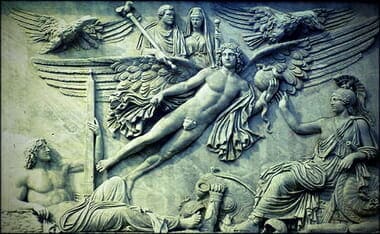
Is Christianity Connected with Mystery Religions?
A small excerpt from Mary Jo Sharp’s chapter, “Does the Story of Jesus Mimic Pagan Stories,” via, Paul Copan & William Lane Craig, eds., Come Let Us Reason: New Essays in Christian Apologetics (pp. 154-160, 164). Mary Jo has a website, Confident Christianity.
1. Osiris
While some critics of Christ’s story utilize the story of Osiris to demonstrate that the earliest followers of Christ copied it, these critics rarely acknowledge how we know the story of Osiris at all. The only full account of Osiris’s story is from the second-century Al) Greek writer, Plutarch: “Concerning Isis and Osiris.”[4] The other information is found piecemeal in Egyptian and Greek sources, but a basic outline can be found in the Pyramid Texts (c. 2686-c. 2160 BC). This seems problematic when claiming that a story recorded in the second century influenced the New Testament accounts, which were written in the first century. Two other important aspects to mention are the evolving nature of the Osirian myth and the sexual nature of the worship of Osiris as noted by Plutarch. Notice how just a couple of details from the full story profoundly strain the comparison of Osiris with the life of Christ.
Who was Osiris? He was one of five offspring born of an adulterous affair between two gods—Nut, the sky-goddess, and Geb earth-god.[5] Because of Nut’s transgression, the Sun curses her and will not allow her to give birth on any day in any month. However, the god Thoth[6] also loves Nut. He secures five more days from the Moon to add to the Egyptian calendar specifically for Nut to give birth. While inside his mother’s womb, Osiris falls in love with his sister, Isis. The two have intercourse inside the womb of Nut, and the resultant child is Horus.[7] Nut gives birth to all five offspring: Osiris, Horus, Set, Isis, and Nephthys.
Sometime after his birth, Osiris mistakes Nephthys, the wife of hisbrother Set, for his own wife and has intercourse with her. Enraged, Set plots to murder Osiris at a celebration for the gods. During the festivities, Set procures a beautiful, sweet-smelling sarcophagus, promising it as a gift to the attendee whom it might fit. Of course, this is Osiris. Once Osiris lies down in the sarcophagus, Set solders it shut and then heaves it into the Nile. There are at least two versions of Osiris’s fate: (a) he suffocates in the sarcophagus as it floats down the Nile, and (b) he drowns in the sarcophagus after it is thrown into the Nile.
Grief-stricken Isis searches for and eventually recovers Osiris’s corpse. While traveling in a barge down the Nile, Isis conceives a child by copulating with the dead body.[8] Upon returning to Egypt, Isis attempts to conceal the corpse from Set but fails. Still furious, Set dismembers his brother’s carcass into 14 pieces, which he then scatters throughout Egypt. A temple was supposedly erected at each location where a piece of Osiris was found.
Isis retrieves all but one of the pieces, his phallus. The body is mummified with a model made of the missing phallus. In Plutarch’s account of this part of the story, he noted that the Egyptians “presently hold a festival” in honor of this sexual organ.[9] Following magical incantations, Osiris is raised in the netherworld to reign as king of the dead in the land of the dead. In The Riddle of Resurrection: Dying and Rising Gods in the Ancient Near East, T. N. D. Mettinger states: “He both died and rose. But, and this is most important, he rose to continued life in the Netherworld, and the general connotations are that he was a god of the dead.”[10] Mettinger quotes Egyptologist Henri Frankfort:
Osiris, in fact, was not a dying god at all but a dead god. He never returned among the living; he was not liberated from the world of the dead,… on the contrary, Osiris altogether belonged to the world of the dead; it was from there that he bestowed his blessings upon Egypt. He was always depicted as a mummy, a dead king.[11]
This presents a very different picture from the resurrection of Jesus, which was reported as a return to physical life.
2. Horus
Horus’s story is a bit difficult to decipher for two main reasons. Generally, his story lacks the amount of information for other gods, such as Osiris. Also, there are two stories concerning Horus that develop and then merge throughout Egyptian history: Horus the Sun-god, and Horus the child of Isis and Osiris. The major texts for Horus’s story are the Pyramid Texts, Coffin Texts, the Book of the Dead, Plutarch, and Apuleius-all of which reflect the story of Horus as the child of Isis and Osiris.[12] The story is routinely found wherever the story of Osiris is found.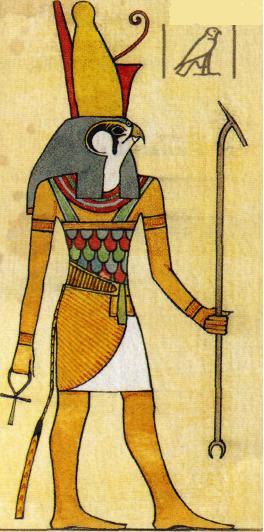
Who was Horus? He was the child of Isis and Osiris. His birth has several explanations as mentioned in Isis and Osiris’s story: (1) the result of the intercourse between Isis and Osiris in Nut’s womb; (2) conceived by Isis’s sexual intercourse with Osiris’s dead body; (3) Isis is impregnated by Osiris after his death and after the loss of his phallus; or (4) Isis is impregnated by a flash of lightning.[13] To protect Horus from his uncle’s rage against his father, Isis hides the child in the Delta swamps. While he is hiding, a scorpion stings him, and Isis returns to find his body lifeless. (In Margaret Murray’s account in The Splendor That Was Egypt, there is no death story here, but simply a poisoned child.) Isis prays to the god Ra to restore her son. Ra sends Thoth, another Egyptian god, to impart magical spells to Isis for the removal of the poison. Thus, Isis restores Horus to life. The lesson for worshippers of Isis is that prayers made to her will protect their children from harm and illness. Notice the outworking of this story is certainly not a hope for resurrection to new life, in which death is vanquished forever as is held by followers of Jesus.[14] Despite this strain on the argument, some still insist that Horus’s scorpion poisoning is akin to the death and resurrection of Jesus.
In a variation of Horus’s story, he matures into adulthood at an accelerated rate and sets out to avenge his father’s death. In an epic battle with his uncle Set, Horus loses his left eye, and his uncle suffers the loss of one part of his genitalia. The sacrifice of Horus’s eye, when given as an offering before the mummified Osiris, is what brings Osiris new life in the underworld.[15] Horus’s duties included arranging the burial rites of his dead father, avenging Osiris’s death, offering sacrifice as the Royal Sacrificer, and introducing recently deceased persons to Osiris in the netherworld as depicted in the Hunefer Papyrus (1317-1301 BC). One aspect of Horus’s duties as avenger was to strike down the foes of Osiris. This was ritualized through human sacrifice in the first dynasty, and then, eventually, animal sacrifice by the eighteenth dynasty. In the Book of the Dead we read of Osiris, “Behold this god, great of slaughter, great of fear! He washes in your blood, he bathes in your gore!”[16] So Horus, in the role of Royal Sacrificer, bought his own life from this Osiris by sacrificing the life of other. There is no similarity here to the sacrificial death of Jesus.
3. Mithras
There are no substantive accounts of Mithras’s story, but rather a pieced-together story from inscriptions, depictions, and surviving Mithraea (man-made caverns of worship). According to Rodney Stark, professor of social sciences at Baylor University, an immense amount of “nonsense” has been inspired by modern writers seeking to “decode the Mithraic mysteries.”[17] The reality is we know very little about the mystery of Mithras or its doctrines because of the secrecy of the cult initiates. Another problematic aspect is the attempt to trace the Roman military god, Mithras, back to the earlier Persian god, Mithra, and to the even earlier Indo-Iranian god, Mitra. While it is plausible that the latest form of Mithraic worship was based on antecedent Indo-Iranian traditions, the mystery religion that is compared to the story of Christ was a “genuinely new creation?”[18] Currently, some popular authors utilize the Roman god’s story from around the second century along with the Iranian god’s dates of appearance (c. 1500-1400 BC).
This is the sort of poor scholarship employed in popular renditions of Mithras, such as in Zeitgeist: The Movie. For the purpose of summary, we will utilize the basic aspects of the myth as found in Franz Cumont’s writing and note variations, keeping in mind that many Mithraic scholars question Cumont, as well as one another, as to interpretations and aspects of the story.[19] Thus, we will begin with Cumont’s outline.
Who was Mithra? He was born of a “generative rock,” next to a river bank, under the shade of a sacred tree. He emerged holding a dagger in one hand and a torch in the other to illumine the depths from which he came. In one variation of his story, after Mithra’s emergence from the rock, he clothed himself in fig leaves and then began to test his strength by subjugating the previously existent creatures of the world. Mithra’s first activity was to battle the Sun, whom he eventually befriended. His next activity was to battle the first living creature, a bull created by Ormazd (Ahura Mazda). Mithra slew the bull, and from its body, spine, and blood came all useful herbs and plants. The seed of the bull, gathered by the Moon, produced all the useful animals. It is through this first sacrifice of the first bull that beneficent life came into being, including human life. According to some traditions, this slaying took place in a cave, which allegedly explains the cave-like Mithraea.[20]
Mit(h)ra’s name meant “contract” or “compact.”[21] He was known in the Avesta—the Zoroastrian sacred texts—as the god with a hundred ears and a hundred eyes who sees, hears, and knows all. Mit(h)ra upheld agreements and defended truth. He was often invoked in solemn oaths that pledged the fulfillment of contracts and which promised his wrath should a person commit perjury. In the Zoroastrian tradition, Mithra was one of many minor deities (yazatas) created by Ahura Mazda, the supreme deity. He was the being who existed between the good Ahura Mazda and the evil Angra Mainyu—the being who exists between light and darkness and mediates between the two. Though he was considered a lesser deity to Ahura Mazda, he was still the “most potent and most glorious of the yazata.”[22]
The Roman version of this deity (Mithras) identified him with the light and sun. However, the god was not depicted as one with the sun, rather as sitting next to the sun in the communal meal. Again, Mithras was seen as a friend of the sun. This is important to note, as a later Roman inscription (c. AD 376) touted him as “Father of Fathers” and “the Invincible Sun God Mithras.”[23] Mithras was proclaimed as invincible because he never died and because he was completely victorious in all his battles. These aspects made him an attractive god for soldiers of the Roman army, who were his chief followers. Pockets of archaeological evidence from the outermost parts of the Roman Empire reinforce this assumption. Obviously, some problems arise in comparing Mithras to Christ, even at this level of simply comparing stories. Mithras lacks a death and therefore also lacks a resurrection.
Now that we have a more comprehensive view of the stories, it is quite easy to discern the vast difference between the story of Jesus and even the basic story lines of the commonly compared pagan mystery gods. One must only use the very limited, general aspects of the stories to make the accusation of borrowing, while ignoring the numerous aspects having nothing in common with Jesus’ story, such as missing body parts, sibling sexual intercourse inside the womb of a goddess-mother, and being born from a rock. This is why it is important to get the whole story. The supposed similarities are quite flimsy in the fuller context.
(Click to enlarge – above & below) Just three pages from Edwin Yamauchi’s book, Persia and the Bible, These three pages are a bit unrelated… but the topic is on Mithras, and if read, you can see the connection to the above portion by Mary Jo.
[4] Plutarch, “Concerning Isis and Osiris,” in Hellenistic Religions: The Age of Syncretism, ed. Frederick C. Grant (Indianapolis: Liberal Arts Press, 1953), 80-95.
[5] In some depictions, Nut and Geb are married. Plutarch’s account insinuates that they have committed adultery because of the anger of the Sun at Nut’s transgression.
[6] Plutarch refers to Thoth as Hermes in “Concerning Isis and Osiris.”
[7] Plutarch’s “Concerning Isis and Osiris” appears to be the only account with this story of Horus’s birth.
[8] This aspect of the story, which was a variation of Horus’s conception story, is depicted in a drawing from the Osiris temple in Dendara.
[9] Plutarch, “Concerning Isis and Osiris,” 87.
[10] N. D. Mettinger, The Riddle of Resurrection: Dying and Rising Gods in the Ancient Near East (Stockholm: Almqvist & Wiksell, 2001), 175.
[11] Henri Frankfort, Kingship and the Gods: A Study of Ancient Near Eastern Religion as the Integration of Society and Nature (Chicago: Oriental Institute of the University of Chicago, 190, 289; cf. 185; cited in Mettinger, Riddle of Resurrection, 172.
[12] For the purposes of this chapter, I use the following sources and translations: E. A. Wallis Budge’s translation of the Book of the Dead; Plutarch’s “Concerning Isis and Osiris”; Joseph Campbell’s piecing together of the story in The Mythic Image; as well as other noted interpretations of the story.
[13] The latter two versions of Horus’s birth can be found in Rodney Stark, Discovering God: The Origins of the Great Religions and the Evolution of Belief (New York: Harper Collins, 2007), 204. However, Stark does not reference the source for these birth stories.
[14] The development of Isis’s worship as a protector of children is a result of this instance; Margaret A. Murray, The Splendor That Was Egypt, rev. ed. (Mineola: Dover, 2004), 106.
[15] Joseph Campbell, The Mythic Image (Princeton, NJ: Princeton University Press, 1974), 29, 450.
[16] Murray, The Splendor That Was Egypt, 103.
[17] Stark, Discovering God, 141.
[18] Roger Beck, “The Mysteries of Mithras: A New Account of Their Genesis,” Journal of Roman Studies 88 (1998): 123.
[19] Roger Beck, M. J. Vermaseren, David Ulansey, N. M. Swerdlow, Bruce Lincoln, John R Hinnells, and Reinhold Merkelbach, for example.
[20] More corecontemporary Mithraic scholars have pointed to the lack of a bull-slaying story in the Iranian version of Mithra’s story: “there is no evidence the Iranian god ever had anything to do with a bull-slaying.” David Ulansey, The Origins of the Mithraic Mysteries (New York: Oxford University Press, 1989), 8; see Bruce Lincoln, “Mitra, Mithra, Mithras: Problems of a Multiform Deity,” review of John R. Hinnells, Mithraic Studies: Proceedings of the First International Congress of Mithraic Studies, in History of Religions 17 (1977): 202-3. For an interpretation of the slaying of the bull as a cosmic event, see Luther H. Martin, “Roman Mithrraism and Christianity,” Numen 36 (1989): 8.
[21] “For the god is clearly and sufficiently defined by his name. `Mitra means ‘con-tract’, as Meillet established long ago and D. [Professor G. Dumezi] knows but keeps forgetting.” Ilya Gershevitch, review of Mitra and Aryaman and The Western Response to Zoroaster, in the Bulletin of the School of Oriental and African Studies 22 (1959): 154. See Paul Thieme, “Remarks on the Avestan Hymn to Mithra,”Bulletin of the School of Oriental and African Studies 23 (1960): 273.
[22] Franz Cumont, The Mysteries of Mithra: The Origins of Mithraism (1903). Accessed on May 3,2008, http://www.sacred-texts.com/cla/mom/index.htm.
[23] Corpus Inscriptionum Latinarum VI. 510; H. Dessau, Inscriptions Latinae Selectae II. 1 (1902), No. 4152, as quoted in Grant, Hellenistic Religions, 147. This inscription was found at Rome, dated August 13, AD 376. Notice the late date of this title for Mithras—well after Christianity was firmly established in Rome.
